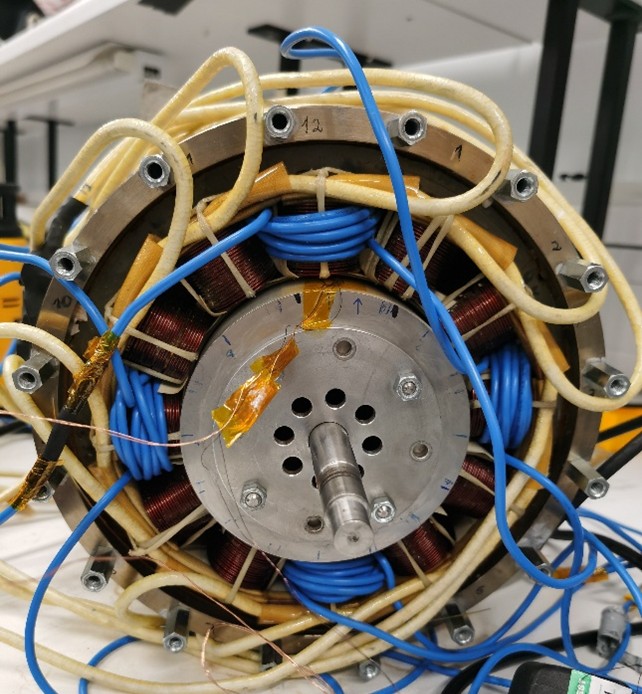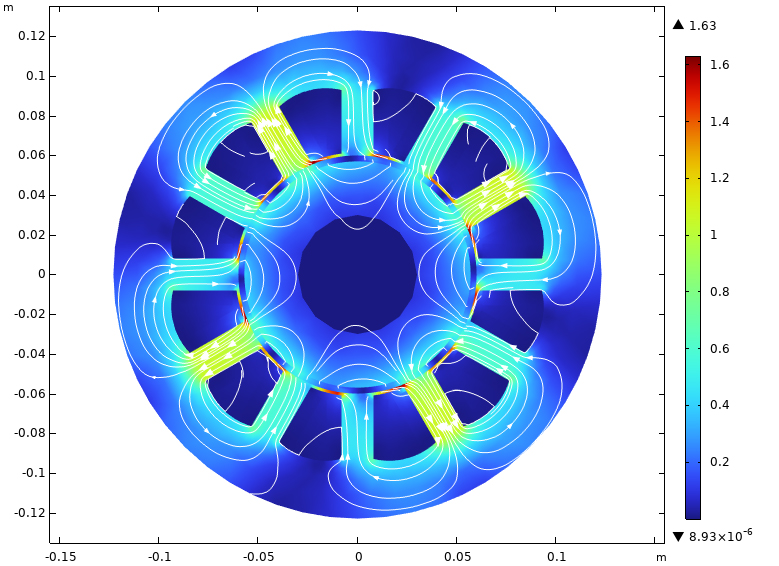
PhD research student Qi Wang wins two prestigious international prizes for Advances in Superconducting Trapped Field Magnets.
These awards are not just milestones—they’re a powerful motivation to keep pushing the boundaries of what’s possible in superconducting motor technology. I’m especially excited by the potential applications in clean propulsion and high-efficiency transport.
Qi Wang
Qi Wang, a PhD student in the Electrical Engineering Division has been awarded two prestigious international prizes for his pioneering work on High-Temperature Superconducting (HTS) magnets. He is the recipient of the 2025 Leslie H. Paddle Scholarship from the Institution of Engineering and Technology (IET) and the 2025 IEEE CSC Graduate Study Fellowship in Applied Superconductivity.
These back-to-back accolades recognise Qi’s growing impact in the field of superconductivity, especially in the development and optimisation of Trapped Field Magnets (TFMs), a transformative technology with the potential to revolutionise energy and medical systems.
Transforming Magnets into Super Permanent Magnets
Qi’s research focuses on HTS Trapped Field Magnets, a new class of superconducting magnets that can ‘trap’ extremely high magnetic fields after a one-time magnetisation, functioning without a continuous power supply. Unlike traditional superconducting coils that require persistent current feeds and bulky hardware, TFMs act as super permanent magnets, capable of achieving magnetic fields well beyond the limits of conventional ferromagnets.
These properties make TFMs especially attractive for clean energy and compact technologies, including high-efficiency motors, magnetic bearings, flywheels for energy storage, and next-generation MRI systems.
A Landmark Review in the Field
Qi is the lead author of a 42-page invited review Superconductor Science and Technology (IOP Publications) published in November 2024, offering a comprehensive analysis of TFMs, their challenges, and future applications.
Co-authored with Dr Luning Hao, Hongye Zhang (University of Edinburgh), and Professor Tim Coombs (Cambridge), the review covers the theoretical, material, and engineering aspects of TFM development, including advanced modelling, fabrication methods, magnetisation techniques, and field performance. It is the first systematic review of HTS TFMs in over a decade. It already serves as a go-to reference for researchers and engineers developing high-performance magnets for real-world systems.

Image above: HTS motor prototype

Image above: Magnetic flux density distribution of the HTS motor operating at rated speed.
Images Above: The HTS motor Qi has been working on comes from the European Union-funded Advanced Superconducting Motor Experimental Demonstrator ASuMED project conducted from 2017 to 2020. The ASuMED project aimed to build a prototype with 1 MW power at 10,000 rpm with less than 0.1% thermal loss, demonstrating scalability to higher power applications. A key innovation of the ASuMED prototype was the use of trapped field stacks in the rotor, replacing conventional permanent magnets in the superconducting motor design.
Understanding Trapped Field Magnets
In simple terms, a Trapped Field Magnet is a piece of superconducting material—either in bulk or tape-stack form—that is magnetised to trap an intense magnetic field. It then maintains that field indefinitely at cryogenic temperatures, without additional energy input.
Qi’s review explains how TFMs can achieve trapped fields as high as 17.89 Tesla—nearly ten times stronger than standard permanent magnets. These field levels are made possible by rare-earth barium copper oxide (REBCO) superconductors, which combine high current capacity with strong thermal and mechanical stability when structured properly. Qi’s work goes further, comparing different TFM geometries: Trapped Field Bulks (TFBs), which are solid superconducting blocks, and Trapped Field Stacks (TFSs), made from layered HTS coated conductors. While TFBs offer higher raw field strength, they are brittle and suffer from inconsistent performance. In contrast, TFSs provide better thermal management, greater shape flexibility, and consistent performance—making them suitable for scalable engineering applications.
Tackling Key Challenges
Qi also addresses the persistent challenges that TFMs must overcome to achieve widespread use. Chief among these are:
- Demagnetisation, particularly in the presence of alternating or cross-fields in real applications like motors;
- Mechanical failure, especially in fragile ceramic bulk materials exposed to Lorentz forces;
- Thermal instability, which can lead to performance degradation or sudden flux movement during magnetisation.
The review proposes various mitigation strategies, such as hybrid magnet configurations, the use of ferromagnetic layers to shape and stabilise fields, and advanced fabrication techniques like multi-seeding and partial homogenisation to improve uniformity.
Application Potential: From Motors to MRI
TFMs are poised to reshape many sectors. Qi outlines a series of applications, from ultra-efficient superconducting motors and magnetic levitation systems to compact, high-resolution MRI and NMR machines. In transport, they could reduce reliance on rare-earth magnets while offering higher torque and efficiency. In space systems, they promise compact magnetic shielding and propulsion solutions. Notably, Qi’s work includes modelling techniques using finite element analysis and COMSOL Multiphysics to predict field performance and thermal effects. This computational insight is vital for integrating TFMs into complex systems like rotating machines or energy storage units.
Looking Ahead
Qi’s dual recognition by the IET and IEEE acknowledges not only his technical contributions but also his leadership in synthesising knowledge across physics, materials science, and electrical engineering. His review has already been cited as a foundational reference for developers of high-field superconducting devices.
Professor Tim Coombs, Theme Leader for Multiscale Energy at Cambridge says:
‘Qi’s work exemplifies the calibre of research we’re proud to support. Winning two such prestigious awards in the same year – from both the IET and IEEE – is an outstanding accomplishment, and we’re delighted to see his contributions being recognised internationally.’
Reflecting on the awards, Qi said:
‘It’s incredibly rewarding to see my work recognised by both the engineering and superconductivity communities. These awards are not just milestones—they’re a powerful motivation to keep pushing the boundaries of what’s possible in superconducting motor technology. I’m especially excited by the potential applications in clean propulsion and high-efficiency transport. This recognition strengthens my commitment to developing innovative, practical solutions that help realise the full potential of superconducting technologies.’
With his current momentum, Qi is well placed to lead the next generation of superconducting innovation—creating cleaner, more powerful, and more efficient systems for the world’s most demanding technologies.
References:

